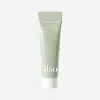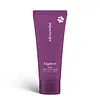What's inside
What's inside
 Key Ingredients
Key Ingredients

 Benefits
Benefits

 Concerns
Concerns

 Ingredients Side-by-side
Ingredients Side-by-side

Water
Skin ConditioningKaolin
AbrasiveGlycerin
HumectantCaprylic/Capric Triglyceride
MaskingHectorite
Absorbent1,2-Hexanediol
Skin ConditioningGlyceryl Stearate Se
EmulsifyingSorbitan Olivate
EmulsifyingCetearyl Olivate
Cetyl Alcohol
EmollientPhoenix Dactylifera Fruit Extract
EmollientFicus Carica Fruit Extract
HumectantPortulaca Oleracea Extract
Skin ConditioningSodium Hyaluronate
HumectantCeramide NP
Skin ConditioningEthylhexylglycerin
Skin ConditioningPyrus Communis Fruit Extract
Skin ConditioningSodium Acrylate/Sodium Acryloyldimethyl Taurate Copolymer
Emulsion StabilisingHedera Helix Leaf/Stem Extract
AntimicrobialPolyisobutene
Butylene Glycol
HumectantOpuntia Ficus-Indica Stem Extract
Skin ConditioningOpuntia Coccinellifera Fruit Extract
Skin ConditioningFragaria Chiloensis Fruit Extract
Skin ConditioningPyrus Malus Leaf Extract
Skin ConditioningAdansonia Digitata Seed Extract
Skin ConditioningSorbitan Oleate
EmulsifyingCaprylyl/Capryl Glucoside
CleansingCrithmum Maritimum Callus Culture Filtrate
Skin ProtectingCentella Asiatica Extract
CleansingWater, Kaolin, Glycerin, Caprylic/Capric Triglyceride, Hectorite, 1,2-Hexanediol, Glyceryl Stearate Se, Sorbitan Olivate, Cetearyl Olivate, Cetyl Alcohol, Phoenix Dactylifera Fruit Extract, Ficus Carica Fruit Extract, Portulaca Oleracea Extract, Sodium Hyaluronate, Ceramide NP, Ethylhexylglycerin, Pyrus Communis Fruit Extract, Sodium Acrylate/Sodium Acryloyldimethyl Taurate Copolymer, Hedera Helix Leaf/Stem Extract, Polyisobutene, Butylene Glycol, Opuntia Ficus-Indica Stem Extract, Opuntia Coccinellifera Fruit Extract, Fragaria Chiloensis Fruit Extract, Pyrus Malus Leaf Extract, Adansonia Digitata Seed Extract, Sorbitan Oleate, Caprylyl/Capryl Glucoside, Crithmum Maritimum Callus Culture Filtrate, Centella Asiatica Extract
Water
Skin ConditioningKaolin
AbrasiveDipropylene Glycol
HumectantPropanediol
SolventCetearyl Alcohol
EmollientBentonite
AbsorbentIsononyl Isononanoate
Emollient1,2-Hexanediol
Skin ConditioningArachidyl Alcohol
EmollientGlyceryl Stearate
EmollientMandelic Acid
AntimicrobialCI 77742
Cosmetic ColorantSolanum Melongena Fruit Extract
Skin ConditioningBehenyl Alcohol
EmollientPotassium Cetyl Phosphate
EmulsifyingArachidyl Glucoside
EmulsifyingPotassium Hydroxide
BufferingCI 77891
Cosmetic ColorantCI 77499
Cosmetic ColorantCI 77491
Cosmetic ColorantEthylhexylglycerin
Skin ConditioningCetyl Alcohol
EmollientXanthan Gum
EmulsifyingGlycerin
HumectantDisodium EDTA
Butylene Glycol
HumectantCaprylic/Capric Triglyceride
MaskingHydrogenated Phosphatidylcholine
EmulsifyingCentella Asiatica Extract
CleansingSucrose Stearate
EmollientSodium Hyaluronate
HumectantTocopherol
AntioxidantHyaluronic Acid
HumectantSodium Hyaluronate Crosspolymer
HumectantPotassium Hyaluronate
Skin ConditioningHydroxypropyltrimonium Hyaluronate
Hydrolyzed Hyaluronic Acid
HumectantMadecassoside
AntioxidantMadecassic Acid
Skin ConditioningAsiaticoside
AntioxidantAsiatic Acid
Skin ConditioningSodium Acetylated Hyaluronate
HumectantWater, Kaolin, Dipropylene Glycol, Propanediol, Cetearyl Alcohol, Bentonite, Isononyl Isononanoate, 1,2-Hexanediol, Arachidyl Alcohol, Glyceryl Stearate, Mandelic Acid, CI 77742, Solanum Melongena Fruit Extract, Behenyl Alcohol, Potassium Cetyl Phosphate, Arachidyl Glucoside, Potassium Hydroxide, CI 77891, CI 77499, CI 77491, Ethylhexylglycerin, Cetyl Alcohol, Xanthan Gum, Glycerin, Disodium EDTA, Butylene Glycol, Caprylic/Capric Triglyceride, Hydrogenated Phosphatidylcholine, Centella Asiatica Extract, Sucrose Stearate, Sodium Hyaluronate, Tocopherol, Hyaluronic Acid, Sodium Hyaluronate Crosspolymer, Potassium Hyaluronate, Hydroxypropyltrimonium Hyaluronate, Hydrolyzed Hyaluronic Acid, Madecassoside, Madecassic Acid, Asiaticoside, Asiatic Acid, Sodium Acetylated Hyaluronate
Ingredients Explained
These ingredients are found in both products.
Ingredients higher up in an ingredient list are typically present in a larger amount.
1,2-Hexanediol is a synthetic liquid and another multi-functional powerhouse.
It is a:
- Humectant, drawing moisture into the skin
- Emollient, helping to soften skin
- Solvent, dispersing and stabilizing formulas
- Preservative booster, enhancing the antimicrobial activity of other preservatives
Butylene Glycol (or BG) is used within cosmetic products for a few different reasons:
Overall, Butylene Glycol is a safe and well-rounded ingredient that works well with other ingredients.
Though this ingredient works well with most skin types, some people with sensitive skin may experience a reaction such as allergic rashes, closed comedones, or itchiness.
Learn more about Butylene GlycolThis ingredient is an emollient, solvent, and texture enhancer. It is considered a skin-softener by helping the skin prevent moisture loss.
It helps thicken a product's formula and makes it easier to spread by dissolving clumping compounds.
Caprylic Triglyceride is made by combining glycerin with coconut oil, forming a clear liquid.
While there is an assumption Caprylic Triglyceride can clog pores due to it being derived from coconut oil, there is no research supporting this.
Learn more about Caprylic/Capric TriglycerideCentella Asiatica Extract (Centella) is derived from an herb native to Southeast Asia. It is famous for its anti-inflammatory and soothing properties.
Centella is rich in antioxidants and amino acids, such as Madecassic Acid and Asiaticoside.
Studies show the compounds in centella help with:
The combination of all these properties makes centella effective at soothing, hydrating, and protecting the skin.
Other great components of centella include Vitamin A, vitamin C, several B vitamins, and Asiatic Acid.
Fun fact: Centella has been used as a medicine and in food for many centuries. As a medicine, it is used to treat burns, scratches, and wounds.
Learn more about Centella Asiatica ExtractCetyl Alcohol is a fatty alcohol. Fatty Alcohols are most often used as an emollient or to thicken a product.
Its main roles are:
Though it has "alcohol" in the name, it is not related to denatured alcohol or ethyl alcohol.
The FDA allows products labeled "alcohol-free" to have fatty alcohols.
Learn more about Cetyl AlcoholEthylhexylglycerin (we can't pronounce this either) is commonly used as a preservative and skin softener. It is derived from glyceryl.
You might see Ethylhexylglycerin often paired with other preservatives such as phenoxyethanol. Ethylhexylglycerin has been found to increase the effectiveness of these other preservatives.
Glycerin is already naturally found in your skin. It helps moisturize and protect your skin.
A study from 2016 found glycerin to be more effective as a humectant than AHAs and hyaluronic acid.
As a humectant, it helps the skin stay hydrated by pulling moisture to your skin. The low molecular weight of glycerin allows it to pull moisture into the deeper layers of your skin.
Hydrated skin improves your skin barrier; Your skin barrier helps protect against irritants and bacteria.
Glycerin has also been found to have antimicrobial and antiviral properties. Due to these properties, glycerin is often used in wound and burn treatments.
In cosmetics, glycerin is usually derived from plants such as soybean or palm. However, it can also be sourced from animals, such as tallow or animal fat.
This ingredient is organic, colorless, odorless, and non-toxic.
Glycerin is the name for this ingredient in American English. British English uses Glycerol/Glycerine.
Learn more about GlycerinKaolin is a clay. It is used for oil control and to help minimize pores. Like other clays, kaolin has the ability to absorb excess sebum or oil. This can help clean out pores and mattify the skin.
Some types of kaolin may have exfoliating properties. When water is added to kaolin, it becomes a paste with small abrasive particles.
Most kaolin is a white color, but may be pink/orange/red depending on where it comes from.
The name 'kaolin' comes from a Chinese village named 'Gaoling'. Kaolin clay comes from rocks rich in kaolinite. Kaolinite, the mineral, has a silicate layered structure. Kaolinite is formed from chemical weathering of aluminum siilicate minerals.
Besides skincare, kaolin is commonly used to make glossy paper, in ceramics, toothpaste, and as medicine to soothe stomach issues.
Learn more about KaolinSodium Hyaluronate is hyaluronic acid's salt form. It is commonly derived from the sodium salt of hyaluronic acid.
Like hyaluronic acid, it is great at holding water and acts as a humectant. This makes it a great skin hydrating ingredient.
Sodium Hyaluronate is naturally occurring in our bodies and is mostly found in eye fluid and joints.
These are some other common types of Hyaluronic Acid:
Learn more about Sodium HyaluronateWater. It's the most common cosmetic ingredient of all. You'll usually see it at the top of ingredient lists, meaning that it makes up the largest part of the product.
So why is it so popular? Water most often acts as a solvent - this means that it helps dissolve other ingredients into the formulation.
You'll also recognize water as that liquid we all need to stay alive. If you see this, drink a glass of water. Stay hydrated!
Learn more about Water